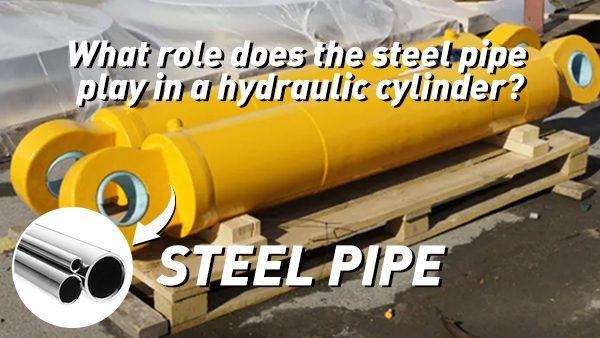Hydraulic cylinders are essential components across a variety of industries, from agriculture and mining to construction and aerospace. Due to the immense pressure they must withstand, hydraulic cylinders are made from materials that provide both strength and durability.
Common materials used in hydraulic cylinder production include stainless steel, aluminum, bronze, and chrome-plated steel. The choice of material depends on the specific requirements, such as the hydraulic cylinder rod material, the operating environment, and desired performance characteristics.
When designing a hydraulic cylinder, there isn’t a universally optimal material. Instead, manufacturers choose from a range of materials, like hydraulic piston components or hydraulic cylinder rods, that best meet the specific application’s needs.
Regardless of what material your hydraulic cylinder is made from, EASTAI. can repair anything, whether it’s a hydraulic shaft or a cylinder rod end!

What Are Hydraulic Cylinder Parts Made Of?
Choosing lightweight, wear-resistant, and corrosion-resistant materials is key to extending the lifespan of hydraulic cylinders.
Here are some of the most commonly utilized materials:
- Hydraulic Cylinder Barrel: The barrel is a critical component, typically made from cold-rolled or honed seamless steel or carbon steel tubing. These cylinder components house the pressure and contain all parts essential for the cylinder’s operation, ensuring the optimal performance of the hydraulic cylinder design.
- Glands & Pistons: Hydraulic pistons and glands are designed based on various requirements such as load, pressure, and durability. Common materials include high-tensile SAE C1026 or St52.3 cold-drawn tubes, which are honed to increase seal life. Other options for piston material include 4140 steel, aluminum, and stainless steel.
- Wiper, Rod, and Piston Seals: The type of hydraulic cylinder piston seals used is influenced by factors like pressure characteristics, operating temperatures, and environmental conditions. Materials for seals range from high-performance polyurethane and nitrile rubber to fluoro rubber, ethylene propylene diene, silicone, and resin-bonded fabric composites or polyester elastomers.
- Shafts: Selecting materials for hydraulic shafts involves considerations such as speed, displacement requirements, retraction forces, loads, and corrosion resistance. Common choices include chrome-plated steel, chrome-over stainless steel, nitrided steel, and chrome-over-nickel.
- Cylinder Mounts: Cylinder mounts are designed to reduce friction and wear on rod seals and bearings. They are usually made from steel, carbon steel, or ductile iron, providing durability and shock absorption, which effectively extends the lifespan of seals and bearings.
- Paint: Protective coatings like epoxy, polyurethane, and chromic oxide paints are vital for protecting hydraulic cylinders from corrosion and wear. Epoxy offers excellent corrosion resistance, polyurethane provides flexibility, and chromic oxide is ideal for high-pressure applications.
More Common Materials Used in Hydraulic Cylinders
Other materials frequently used in hydraulic cylinder production and servicing include:
- Stainless Steel 301: This high-strength austenitic alloy offers excellent corrosion resistance, making it suitable for stainless hydraulic cylinder components and cylinder rods.
- Titanium Alloy Grade 01: The softest and most pliable form of titanium, ideal for certain cylinder parts.
- Low Alloy Steel: Known for its strength, flexibility, and resistance to fatigue and corrosion, even in extreme temperatures.
- Cast Iron Grade 60-44-18: Used for fasteners and valve components due to its tensile strength and abrasion resistance.
- Nickel-Chromium Alloys: These alloys provide high levels of oxidation and corrosion resistance, ideal for hydraulic applications.
- Chrome Plating: Reduces friction and provides corrosion resistance, especially in high-pressure hydraulic cylinder applications.
- Nitrile Rubber: Ideal for seals due to its resistance to oils and abrasion.
- Neoprene Rubber: Commonly used in hydraulic cylinder seals for its UV resistance and excellent sealing properties.
Get Professional Hydraulic Cylinder Repairs
When selecting the best material for your hydraulic cylinder rod, it’s crucial to consider the operating conditions, loads, and desired performance levels. Many rely on professional fabricators to manage their hydraulic system needs.
At EASTAI, we specialize in repairing and rebuilding hydraulic cylinders. Clients trust us for reliable, cost-effective service that minimizes downtime and enhances production efficiency. Rest assured, we use the best materials for every hydraulic cylinder repair.
Contact us today for assistance with your hydraulic cylinder needs—whether it’s a hydraulic cylinder rod end type or a cylinder tube repair, we handle all aspects of cylinder servicing.

